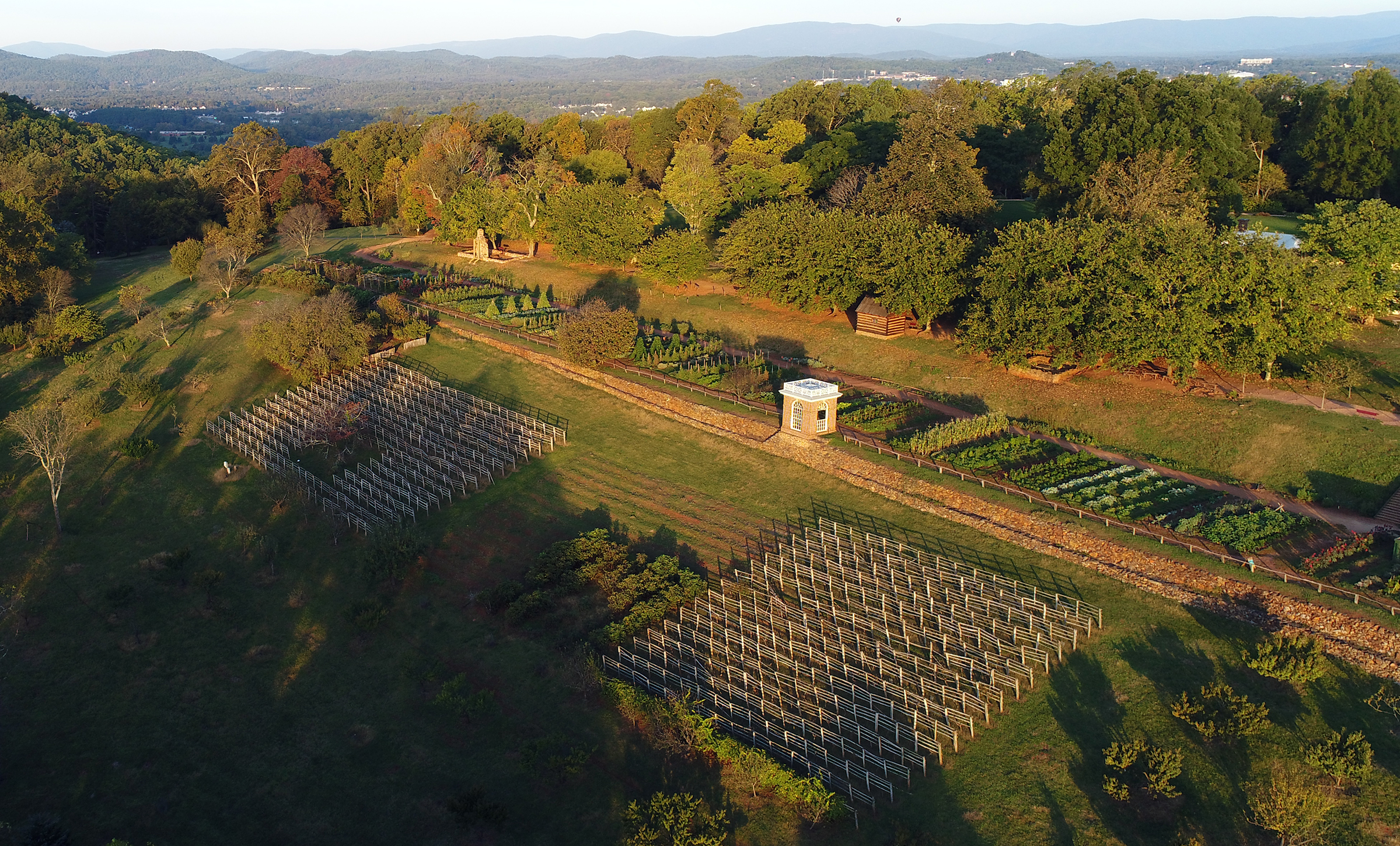Vineyards
Thomas Jefferson, described as America's "first distinguished viticulturist" and "the greatest patron of wine and wine growing that this country has yet had," established two vineyards at Monticello. Both were situated in the south orchard, below the garden wall.
Although Jefferson aspired to make wine from Monticello-grown grapes, the continual replanting of the vineyards suggests a perennial and losing struggle with grape cultivation. But Jefferson was not alone. The successful cultivation of Vitis vinifera, the classic European wine species, was virtually impossible, until modern methods were developed to control black rot and such destructive pests as Phylloxera, an aphid-like root louse. Many native grapes were grown more effectively than vinifera, yet the poor quality of the resultant wine hindered the development of an established industry.
The history of grape culture at Monticello suggests Jefferson's constant oscillation between a desire to grow the difficult yet rewarding vinifera, and the possibilities of well-adapted New World alternatives — the fox grape, Vitis labrusca, and the Scuppernong variety of the southern muscadine, Vitis rotundifolia. Although it is unlikely that wine was made at Monticello in Jefferson's lifetime, the diverse collection of varieties he assembled and his influential advocacy of American viticulture were worthy accomplishments in themselves.
The two vineyards, the northeast (9,000 square feet) and the southwest (16,000 square feet), were ideally suited for grape growing in the heart of the south orchard. The 1807 planting of 287 rooted vines and cuttings of 24 European grape varieties was the most ambitious of seven major experiments. The vineyards were organized into seventeen narrow terraces, each reserved for specific varieties that Jefferson had received from three sources. Many of these vinifera cultivars had probably never been grown in the New World. Such a varietal rainbow, many of them table grapes, represents the vineyard of a plant collector, an experimenter rather than a serious wine maker. When the 1807 scheme failed, probably because the vines were dead on arrival or not planted properly, Jefferson became more committed to the possibilities of native American vines.
In 1985, the Thomas Jefferson Foundation restored Jefferson's 1807 plan for the northeast vineyard using several Jefferson-related European varieties grafted on hardy, pest-resistant native rootstock. Because of a documentary suggestion that vines were "espaliered," a permanent structure based on an eighteenth-century American grape trellis was constructed. Three hundred bottles of a blended white wine were produced from the harvest of 1988.
The southwest vineyard was replanted in 1993 entirely with the Sangiovese grape, a variety documented by Jefferson in 1807 and the principal ingredient of Chianti. Several vintages were made with harvests from this vineyard. The plantings at Monticello continue to serve as experimental gardens of unusual varieties of vinifera.
-Peter Hatch, 1998
Further Sources
- Hailman, John R. Thomas Jefferson on Wine. Jackson: University Press of Mississippi, 2006.
- Hatch, Peter J. The Fruits and Fruit Trees of Monticello. Charlottesville: University Press of Virginia, 1998.
- Look for further sources in the Thomas Jefferson Portal.
